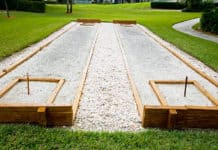
Looking for a new icebreaker? Try this technique, known as a human spectogram.
As an icebreaker or conversation starter, Jessie States, CMP, CMM, Director, MPI Academy at Meeting Professionals International, sometimes asks attendees to take a stand on a controversial issue and move to a pro or a con line. Or she might have a group decide the importance of one element over another by choosing a spot in a single line with a 1-to-10 like-dislike scale.
“Either way, people make a choice and find voices that are similar and disparate to their own. Sometimes, I’ll try for consensus and, after a discussion, ask if people would like to move closer to the center.”
Known as a human spectrogram, this exercise can take many forms, said Adrian Segar, founder, Conferences That Work. For example, projecting a map on a floor and having attendees move to the spot that represents where they live is a great way to get participants to quickly meet fellow participants who live near them.
Participants enjoy getting out of their chairs (if they are able) and using the space, States added. She said she ensures that everyone can participate, regardless of their ability to stand, walk or move, and never forces anyone to share an opinion. “I ask who is ‘courageous’ enough to begin the discussion. Typically, those who stand on the poles (1s and 10s) are pretty passionate about why they chose their place in line.”
“Spectrograms can be chosen to uncover just about anything useful that attendees want to know about each other, and the only requirement is sufficient open space in the room,” noted Segar. “They cost nothing to do and get attendees moving—which is always good for improving attention and engagement.”
You Might Also Be Interested In
5 Icebreaker Ideas That Actually Work
Easing the Pain of Socialization for Introverted Attendees
5 Tips for Making Your Meetings More Experiential








